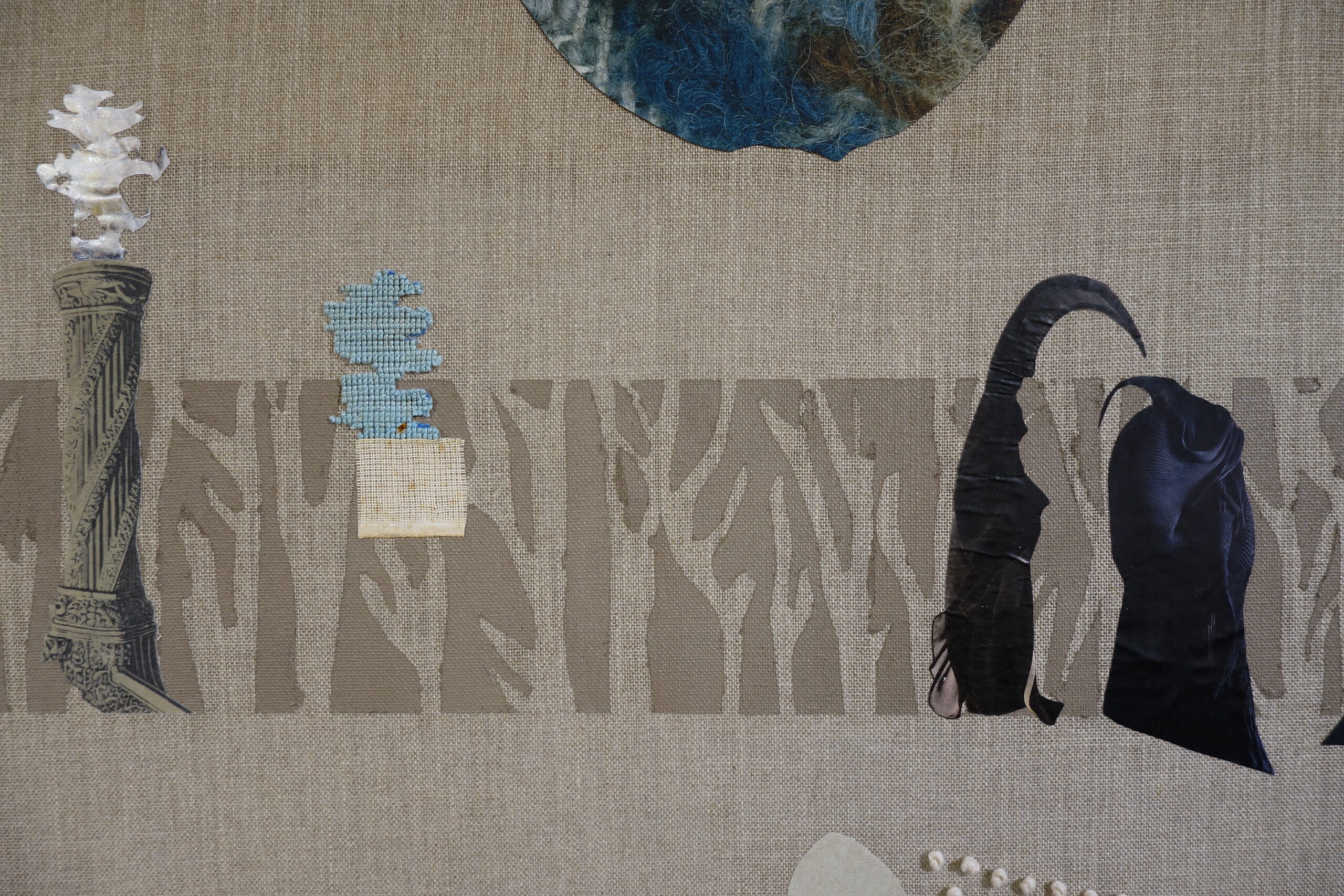mounted on canvas; 60cm x 50cm
Slip (2016)
Gallery of Slip details, exhibition installation and studio documentation
The story behind Slip
Paolo di Dono, called Uccello (1397–1475):
The Hunt in the Forest (c.1465-1470)
tempera and oil, with traces of gold, on panel; 177cm x 73.3cm
The Hunt in the Forest is held in the collections of the Ashmolean Museum, Oxford.
Look at the clothes of the hunters in Uccello’s The Hunt in the Forest (1470) The colours – tangerine, geranium, lavender, rose, olive, blackberry, mushroom – are vivid against the deep forest because Uccello painted in the figures first as white silhouettes (whereas the foliage overhead was painted in from a black background). Each hunter has been dressed in contrasting tunic and hose, with orange being used for the horses’ tack.
I wondered about the inclusion of the small pond in the foreground, and about what might lie beneath…
Slip was first shown in the exhibition Quarry at the Brocket Gallery, London in 2016.
More works in Quarry

Cleave (2016)
As if peering through a gap in the trees this art work focuses on the relationship between light and dark, quarry and hunter. The colour and form of the red figure references Uccello’s practice within the late Gothic tradition and reminds us that red is the colour of fairytales, representing blood (virginity, violence, death).

Mantle (2016)
As if standing in front of a green screen this mysterious figure invites us to imagine a space in which anything is possible.

Quarry (2016)
Like Paolo Uccello’s Hunt in the Forest (1470), Quarry came into existence from dark to light. Uccello’s technique created a theatrical depth and drama that I wanted to capture.

Query (2016)
In Paolo Uccello’s preparation of his wood panels for Hunt in the Forest (1470), he glued canvas over knots and scored lines into a black underlayer of paint to mark tree branches and vanishing points.

Salt (2016)
Salt is mined, extracted and evaporated. Stitching mends holes, fills in blank space. This artwork began life as the back of an unfinished needlepoint and grew into an exploration of geology and archeology.

Silk (2016)
This work started as an old needlepoint completed by an unknown sewer, that I unpicked, leaving only these trees intact. It was a way for me to look at the stage without the players.

Trace (2016)
I wanted to create a work that used just a few very strong elements to show the power of a repeated shape. I drew this grid over Uccello’s painting to reveal his mastery of perspective and as the starting point for Trace.

When much had been forgotten (2016)
The relics and ghosts of long ago are brought together here as if in a wild dream of nature. Starting from the verticals of Uccello’s trees and dotted lines he cut into the wood I wanted to present a landscape of fragments that offers a framework for a narrative.

A walk in the woods (2016)
This conversation between Sarah Gillett and the writer Amy Lay-Pettifer digs deeper into the artist’s relationship with Paolo Uccello’s painting The Hunt in the Forest (1470) and her wider art practice.

PACK
The dogs in south London are running. One of the big ones slows down as it passes me and I step back as its nose swerves into my crotch, waving my arms as though that would make any difference. If it were really hungry it would just eat me but I get a face full of hot meaty air and it’s a lucky day.

The Quarries: Drag, Fold and Mantle (2016)
The story of a spontaneous polaroid film collaboration with the artist Luke Harby
I think you might like...

Radar Beach
Joseph reaches down and picks up a shell. He hands it to the boy, who is dragging a red plastic bucket across the sand. “Here. What about this one?”
Bill assesses the offering intently. “No Daddy,” he says firmly, “It’s broken here, see.”


Logic Unfolding Across A Colourless Void
It is late when I see you moving into the flat above the pub opposite. Must be past 11, because I hear the doors swinging open, hot blue noise gulping for air.